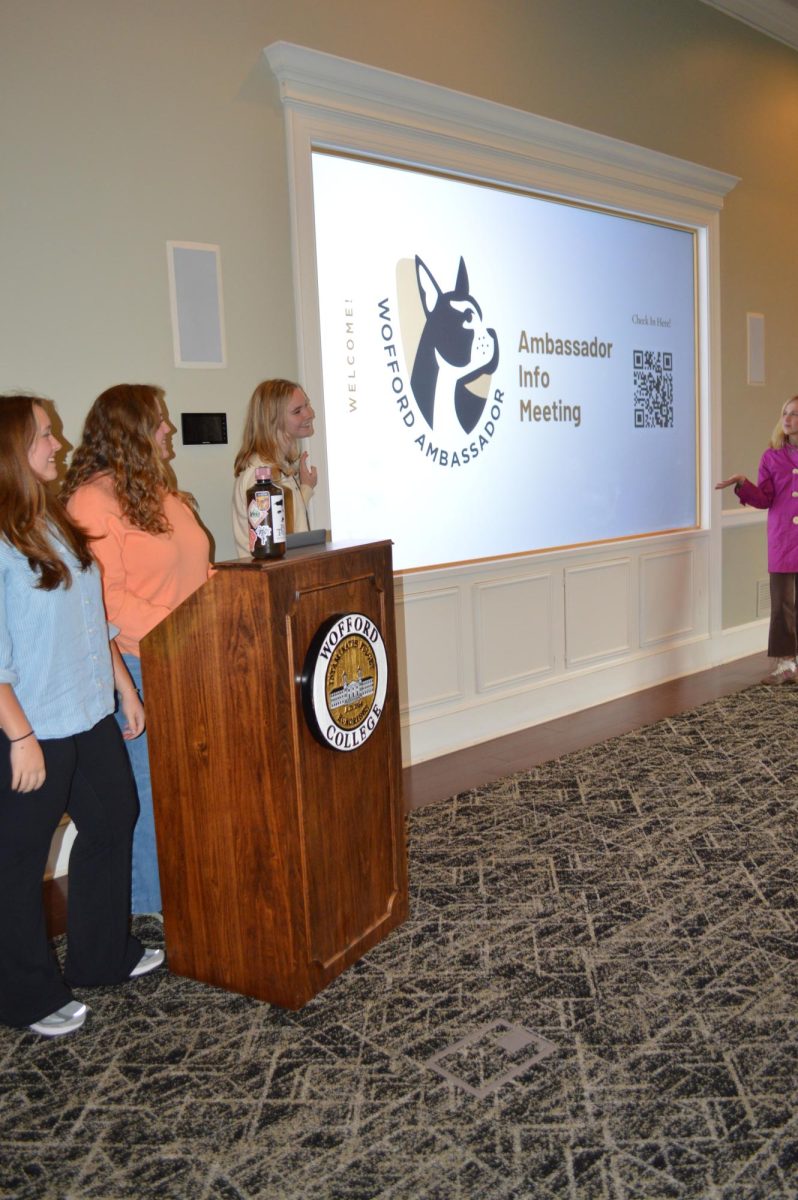Article written by contributing writer, Carson Maske.
Frat flu, College Cold, Wofford Plague, Marsh Plague – all unofficial names given to the sicknesses that have struck Wofford’s campus since the beginning of the school year. As campus became filled with life, the student body saw a series of waves of illnesses and diseases that we’re still seeing today as the fall semester is coming to an end.
Bronchitis, strep throat, mono, influenza and many more illnesses have swept across Wofford’s campus, despite the numerous pathogen protective measures that the Wellness Center has pushed for.
As coughs fill lecture halls in the midst of a pandemic, the question stands: how is the Wellness Center dealing with these circumstances?
The multi-purpose program at the Hugh R. Black Wellness Center can be broken down into two general purposes: to provide healthcare treatment to the student body and to provide the student body with assistance in an advisory and guidance role.
The Wellness Center staff contains a full-time nurse practitioner, an assistant registered nurse and a part time nurse, as well as four mental health counselors.
“We’re just like a doctor’s office in that we have a nurse practitioner. We test for things like strep, mono, flu, pregnancy and COVID,” said Lisa Lefebvre, director of employee wellness and medical services. “Anything Wofford can hold, we can handle. Whether it’s a physical crisis, mental health crisis, an injury, sexual assault.”
Lefebrve explained that, each year, the fall semester is a season of illnesses for the Wofford community. With students being exposed to new environments and living in close quarters, they are bound to get sick. Because of this, the Wellness Center sees an annual increased number of sick patients during the fall semester, even prior to the COVID-19 pandemic.
Lefebrve also commented on the factors of stress and the role of the student in their own health: “Stress levels and not taking care of your bodies can lead to sickness.”
Lefebrve said it is normal for the Wellness Center to see more students this time of year, “We see somewhere between 30 to 50 people a day; a doctor’s office sees 20 people,” Lefebrve added. “Our nurse practitioner sees more people than a doctor would on a full day.”
With a large number of students visiting the Wellness Center, it brings up the question of the quality of care being given to Wofford students.
Dean Elizabeth Wallace, associate vice president and director of the wellness center, addressed this concern: “We aren’t seeing a drop in quality or anything along those lines…The only thing that’s changed is that appointments are required. We’re seeing a lot of positive feedback on that.”
However, some students have felt that the quality of care from the Wellness Center has been affected during this time of high-demand. Stories of students receiving prescription drugs without understanding their purpose and the difficulty of being able to schedule appointments have left some students frustrated and concerned.
Some students are picking academics over health due to the unpleasant experiences they hear from their peers about the Wellness Center, leading them to remain sick or result in finding care elsewhere.
One senior, who wished to remain anonymous, said they were recently sick but, due to the lack of appointments at the Wellness Center, had to visit CVS MinuteClinic for care.
“I went to make an appointment on a Tuesday because I felt so sick but the next appointment that fit my schedule wasn’t until the next Monday,” the student said. “So I had to visit CVS to get a prescription… I was fully healed by Monday, which would have been the day of my Wellness Center appointment.”
While the fall season illnesses have brought on stress for the Wellness Center and students, the management system and staff has made efforts to make a positive presence on campus through things like the flu shot campaign and a push for student cleanliness.
Posters with instructions for clean living have filled student common areas and bathrooms. Signs reminding students of the indoor mask requirements have also made an appearance everywhere on campus.
“Signs are all over. Signs to wash your hands. To wear your mask. To clean your room. They’re everywhere,” said Jo Ann Mitchell Brasginton, vice president of marketing and communications.
Flu shot events were also scheduled in multiple places and times across the fall season. At one event, Lefebrve recounted giving out almost 60 flu shots in two hours.
“We got 400, and we gave out 380 in total,” Lefebvre said, concerning total flu shots administered. “For us, that’s pretty amazing.”
With the flu shots received and fall semester being almost over, many students are wondering when there will be less sicknesses around campus.
“We have certain times that are more trying. Yes, we are a bit full right now. We’ll probably see an increase before we leave (for Thanksgiving break). Then in exam week. Then we’ll see a decrease,” said Lefebrve. “Again stress level plays a role in this. When people are stressed, they don’t take care of themselves,”
The fact remains that a large percentage of students are getting sick. The Wellness Center and it’s physical health staff are overbooked. With flu season in full swing and the disease spreading around campus, in spite of the college’s flu vaccine efforts, students’ health continues to be at the forefront of peoples’ minds.




























